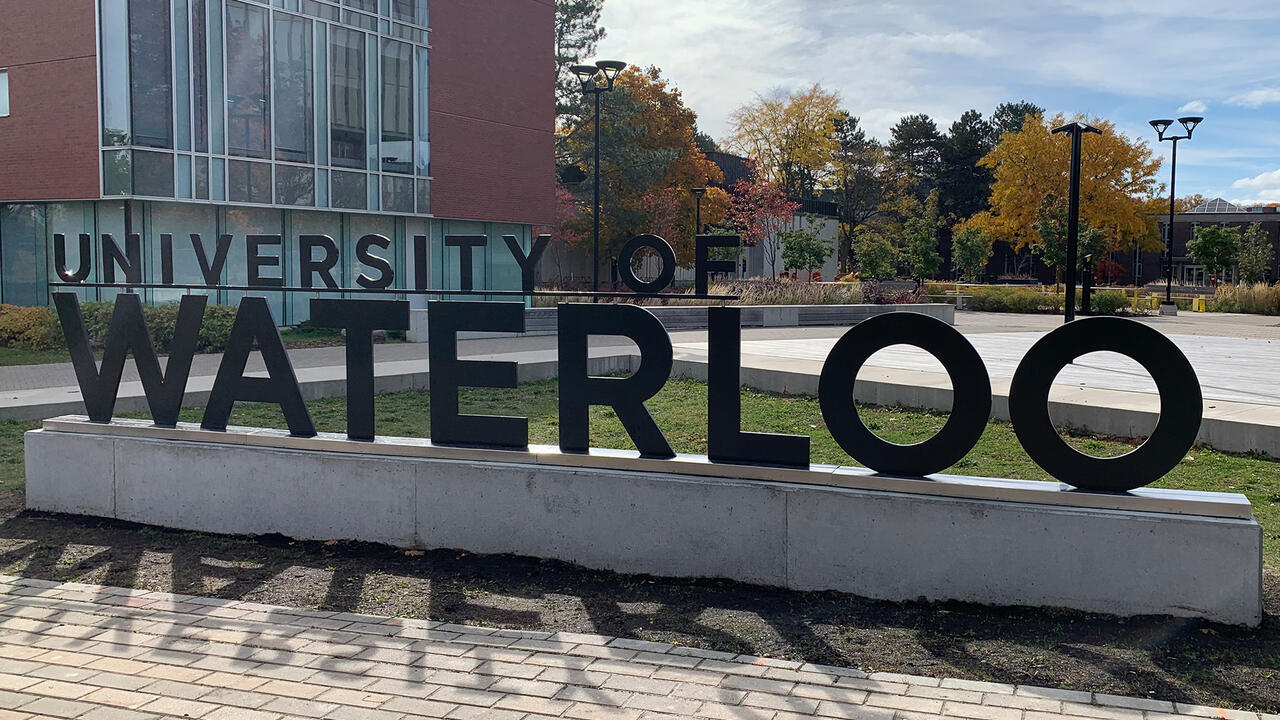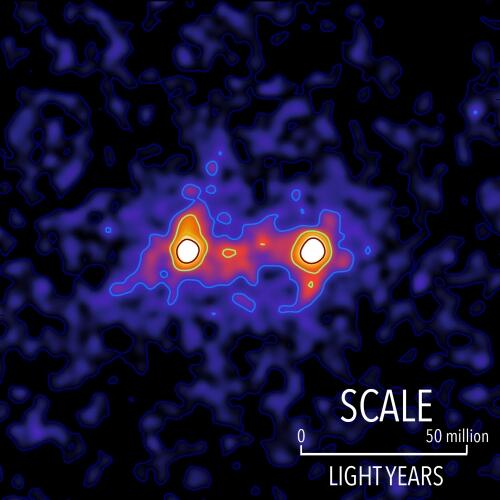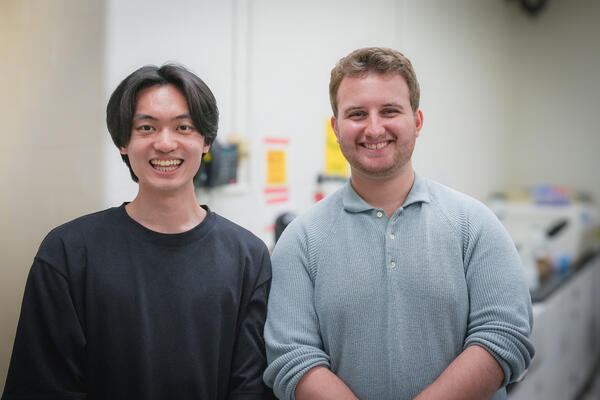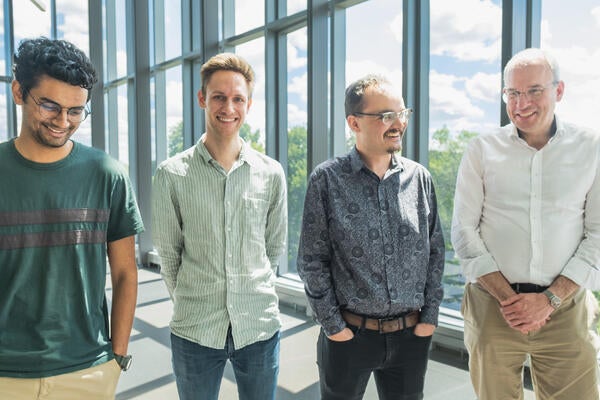
Waterloo researchers capture first image of a dark matter web that connects galaxies
Researchers at the University of Waterloo have been able to capture the first composite image of a dark matter bridge that connects galaxies together

Researchers at the University of Waterloo have been able to capture the first composite image of a dark matter bridge that connects galaxies together
By Media RelationsResearchers at the University of Waterloo have been able to capture the first composite image of a dark matter bridge that connects galaxies together.
The composite image, which combines a number of individual images, confirms predictions that galaxies across the universe are tied together through a cosmic web connected by dark matter that has until now remained unobservable.
Dark matter, a mysterious substance that comprises around 25 per cent of the universe, doesn’t shine, absorb or reflect light. It has traditionally been largely undetectable, except through gravity.
“For decades, researchers have been predicting the existence of dark-matter filaments between galaxies that act like a web-like superstructure connecting galaxies together,” said Mike Hudson, a professor of astronomy at the University of Waterloo. “This image moves us beyond predictions to something we can see and measure.”
As part of their research, Hudson and co-author Seth Epps, a former master’s student at the University of Waterloo, used a technique called weak gravitational lensing. It's an effect that causes the images of distant galaxies to warp slightly under the influence of an unseen mass such as a planet, a black hole, or in this case, dark matter. The effect was measured in images from a multi-year sky survey at the Canada-France-Hawaii Telescope.
They combined lensing images from more than 23,000 galaxy pairs located 4.5 billion light-years away to create a composite image or map that shows the presence of dark matter between the two galaxies. Results show the dark matter filament bridge is strongest between systems less than 40 million light-years apart.
“By using this technique, we’re not only to able to see that these dark matter filaments in the universe exist, we’re able to see the extent to which these filaments connect galaxies together,” said Epps.
Hudson and Epps’ research appears in the Monthly Notices of the Royal Astronomical Society.

Dark matter filaments (shown in red) bridge the space between galaxies (shown in white) on this false colour map.

Read more
Velocity pitch competition winners share exciting startup ideas using artificial intelligence and deep tech, showcasing creativity and entrepreneurial prowess

Read more
Waterloo students earn more than $700,000 in grants to scale their research efforts on lab-grown fish

Read more
Modular software brings together a variety of expertise to create a new method to realistically model and analyze quantum cryptography
The University of Waterloo acknowledges that much of our work takes place on the traditional territory of the Neutral, Anishinaabeg, and Haudenosaunee peoples. Our main campus is situated on the Haldimand Tract, the land granted to the Six Nations that includes six miles on each side of the Grand River. Our active work toward reconciliation takes place across our campuses through research, learning, teaching, and community building, and is co-ordinated within the Office of Indigenous Relations.